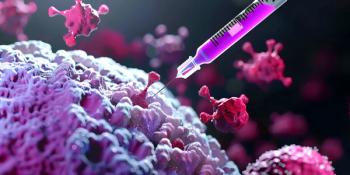
- September 2012 Oncology
- Volume 79
- Issue 9
Genetic Aberrations in Oral Dysplasia Point to Cancer Progression
Chromosomal changes at the allele level were recently found to influence the progression of oral dysplasia into malignant lesions, according to a new prospective study of 296 patients with mild or moderate keratotic abnormalities.
To fully understand how oral precancers can become cancerous, scientists in this study used their prior research, which showed that loss of heterozygosity (LOH) on the short arms of chromosomes 3 and 9 was associated with oral cancer development. LOH occurs when a somatic cell heterozygous for a deleterious mutant allele and a normal allele goes through a deletion or other mutational event on the normal copy, rendering the gene inactive. This gene inactivation could stop the production of tumor suppressor genes.
Investigators grouped the patients into low-, intermediate-, and high-risk groups based on the chromosomal location of the LOH. Five-year progression rates were found to be 3.1% for the low-risk group, 16.3% for the intermediate-risk group, and 63.1% for the high-risk group. This means that 2 of 3 high-risk cases are progressing, according to the study authors.
Articles in this issue
over 13 years ago
6 Hours or Less of Sleep a Risk Factor for Aggressive Breast Cancerover 13 years ago
Colonoscopy-Related Factors May Predict Cancer Riskover 13 years ago
Can You Read These Rxs?over 13 years ago
2012 Next Generation Pharmacist Awards: Meet the Finalistsover 13 years ago
Health App Wrapover 13 years ago
Case Studiesover 13 years ago
Living with Cancerover 13 years ago
A Closer Look at Medication Reconciliationover 13 years ago
Drug Diversion and Abuse: Nasal Naloxone and Law EnforcementNewsletter
Stay informed on drug updates, treatment guidelines, and pharmacy practice trends—subscribe to Pharmacy Times for weekly clinical insights.














































































































































































































